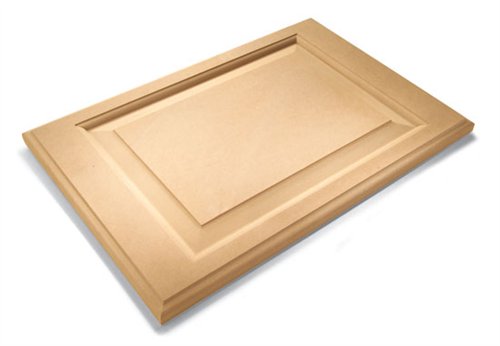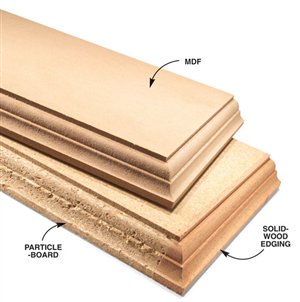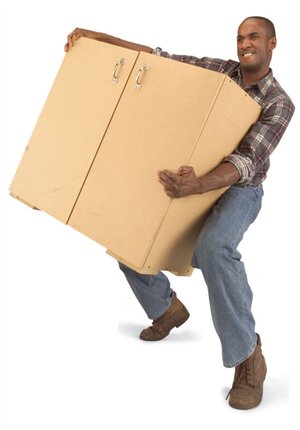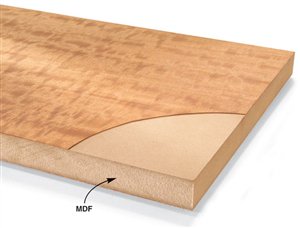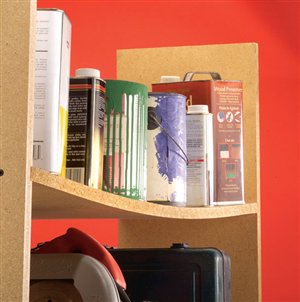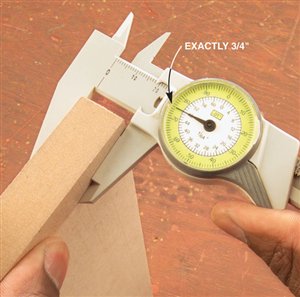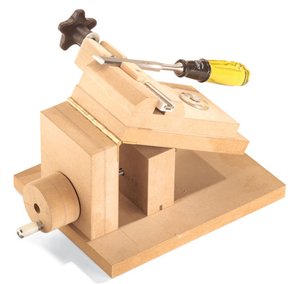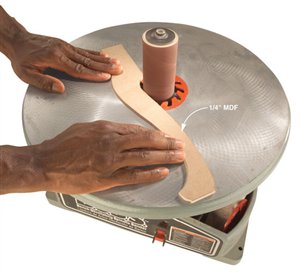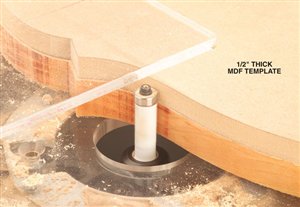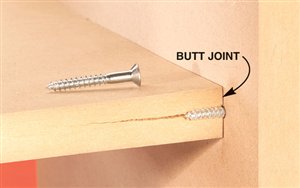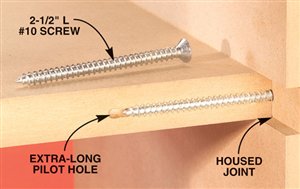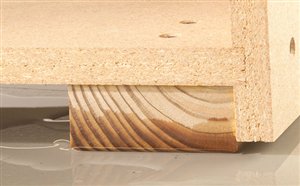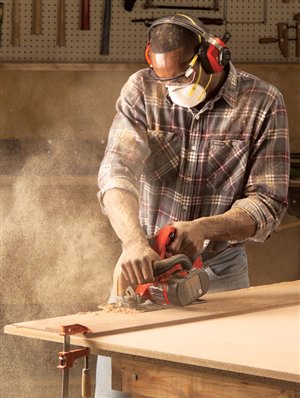We may receive a commission when you use our affiliate links. However, this does not impact our recommendations.
How two versatile woods can be both a blessing and a curse.
by Karen Nakamura

Cheap, plain and definitely not wood. That’s how many woodworkers describe particleboard and MDF (medium-density fiberboard), but think these words instead: inexpensive, uniform and stable.
- Inexpensive. MDF and particleboard panels run $25 to $35 a sheet (oversized at 49 in. by 97 in. so you can cut off a dinged edge).
- Uniform. Collectively called composite wood, MDF and particleboard panels don’t have the irregularities of veneer-core plywood, such as voids on the inside and patches on the outside.
- Stable. Composite wood doesn’t shrink and swell across the grain or warp to the same degree as solid wood.
Composite wood has a few significant drawbacks: it’s heavy, easily damaged and not very stiff. In addition, it doesn’t hold screws as well as solid wood, swells when it gets wet and creates clouds of obnoxious sawdust. Particleboard is fine for utilitarian work, but MDF is preferred for furniture projects. MDF is smoother, takes better detail, holds screws better and paints very well once its edges are sealed. Whichever one you choose, use only carbide cutters, because the binders in the wood are very abrasive. Even carbide will wear more quickly than normal. Here we’ll only cover the basics, but a wealth of free technical information on different grades of composite wood is available from The Composite Wood Council. You can download entire pamphlets at www.pbmdf.com or call (301) 670-0604.
MDF vs Particleboard vs Real Wood
| MDF takes a much crisper edge than particleboard. MDF is made of very small wood fibers, almost like flour, while particleboard is made from larger, coarser fibers. Particleboard has a tendency to chip out when routed. If you want sharply defined edges with particleboard, glue on a solid wood strip. |
|
 |
| Man, this stuff is heavy! Projects made from MDF and particleboard can weigh a ton. A full sheet of 3/4-in. MDF is 97 lbs. A sheet of particleboard typically weighs 85 lbs. A sheet of veneer-core birch plywood, by comparison, comes in at 60 lbs. Extra weight means joints in moveable furniture have to be extra strong. |
|
 |
| MDF and particleboard are extremely flat. They’re perfect for veneering because there are no lumps or ripples to show through extra-thin sheets of veneer. Glue veneer on both sides to keep the panel from distorting. |
|

|
| It may be flat, but it’s not stiff. Look familiar? MDF and particleboard shelves are notorious for drooping, even from their own weight, unless they have additional support. Shelves that are 10-in. deep should be no more than 24-in. long. |
|

|
| MDF’s thickness is usually right on the money. Unlike plywood, which is generally undersized, MDF and particleboard often fit right into standard-sized grooves. Material that’s 3/4-in. thick will swell by 1/64 in. or more if stored in damp conditions, however, so it’s a good idea to keep it in a dry place. |
|

|
| MDF is ideal for jigs. It’s flat, smooth, equally stable in length and width, made in precise thicknesses, and cuts and shapes without chipping. In addition, you can drill precisely located holes in it because there are no fibers to deflect the bit. This jig is used to sharpen chisels with sandpaper on a drill press, and was featured in AW #98, January 2003, page 62. |
|

|
| Thin MDF is handy for making patterns. MDF comes in 1/4 in. and 1/2-in. sheets, although you may have to order them through a lumberyard. MDF is easy to sand, particularly when it’s thin. 1/4-in. MDF is a better material than plywood for patterns because its edges are smoother, but it’s not strong enough to make long, thin patterns. |
|

|
| Router templates made from MDF have durable edges. 1/2-in.-thick MDF works best. It has more bearing surface than 1/4-in. stuff and is easier to sand to shape than 3/4-in. material. Here’s where a perfectly smooth edge on the template really helps to make duplicate parts that require little sanding. |
|

|
| Cracks start easily in composite wood if you cut corners and don’t drill a pilot hole for a screw. This spells trouble for a load-bearing butt joint. From tiny cracks come big failures! Short, shallow-threaded wood screws don’t hold well in the edge of composite wood. |
|

|
| Long screws and housed joints are best for shelves. Deep threads on the screws are a must. Drill an extra-long pilot hole that’s the same diameter as the solid shaft of the screw. Add glue to make a really strong and durable joint. (Use plenty because edges soak up lots of glue!) |
|

|
| Wet basement or garage floors wreak havoc with MDF and particleboard. The fibers in both woods soak up water and expand like a sponge. However, when the material dries out, it doesn’t shrink back. Instead, tiny cracks develop, weakening the wood. If this piece is moved, the bottom edge will crumble. |
|

|
| Raise the case above a wet floor with solid-wood feet. Here we used pressure-treated lumber (so the feet won’t rot even if they stay damp) and glued and screwed them to the case with a water-resistant yellow glue. The glue barrier prevents the case from soaking up water. |
|

|
Are MDF and Particleboard Hazardous to Your Health?
Formaldehyde and dust are significant concerns with composite wood. The strategies listed here can limit your exposure to both problems.
Formaldehyde is used in the glues and binders of composite wood and is slowly emitted from the entire panel as a gas. Many manufacturers have reduced formaldehyde emissions in the last few years, but some people have allergic reactions to even small amounts.
There are three things you can do about formaldehyde emissions:
• Buy low-formaldehyde panels (see Source, below, for one such product).
• Air out composite panels in your garage or shed for a few weeks.
• Seal in the formaldehyde by coating all the surfaces of your project with paint, varnish or a laminate.
As woodworkers know all too well, composite wood creates giant clouds of very fine wood and binder dust. MDF is the worst offender. This dust is not only annoying, but prolonged exposure can lead to respiratory problems.
Protect yourself with three levels of dust control:
• Collect the dust at the source with whatever kind of vacuum hose you can rig up.
• Always wear a mask. Look for NIOSH N95 masks with two straps and a nose clip for a tight seal.
• Keep the dust from settling over your shop and home by trapping it in an overhead air scrubber. |
|

|

This story originally appeared in American Woodworker January 2004, issue #105.
Source information may have changed since the original publication date.
Source
Dow BioProducts Ltd., (800) 441-4DOW www.dow-bioproducts.com Wood Stalk fiberboard (low formaldehyde).
Product Recommendations
Here are some supplies and tools we find essential in our everyday work around the shop. We may receive a commission from sales referred by our links; however, we have carefully selected these products for their usefulness and quality.




